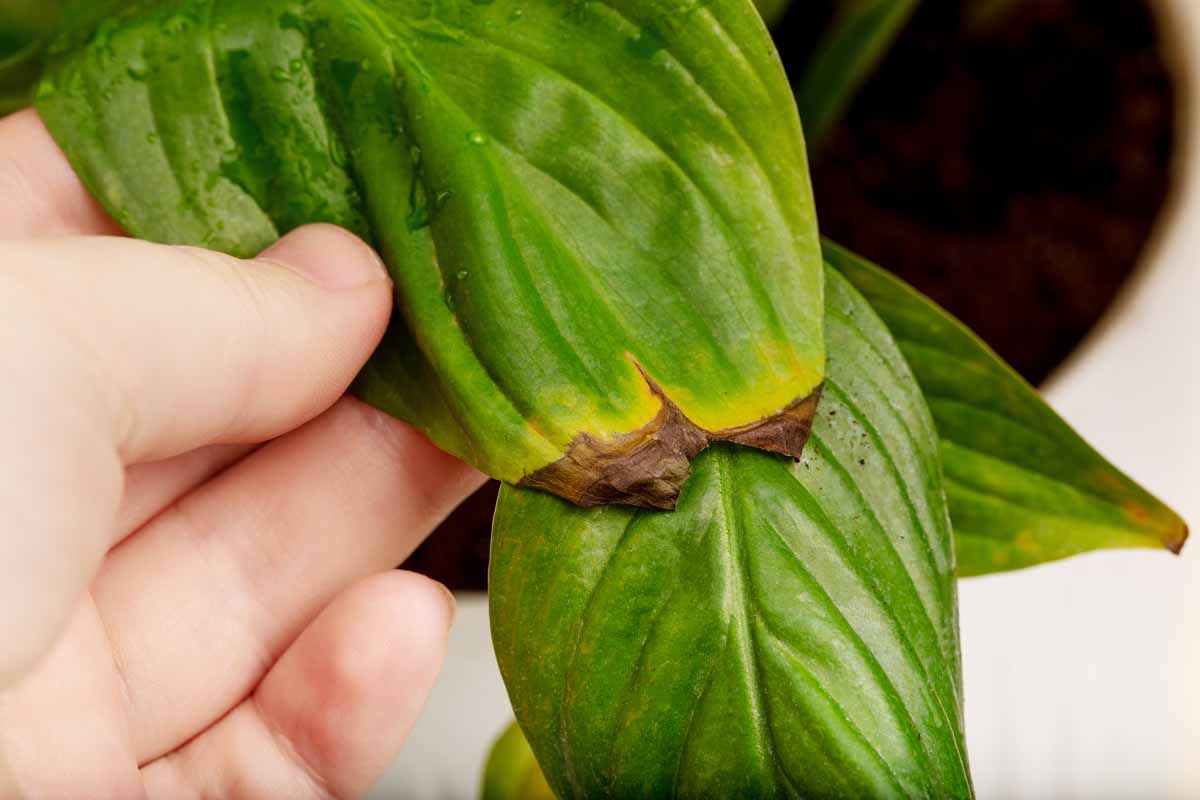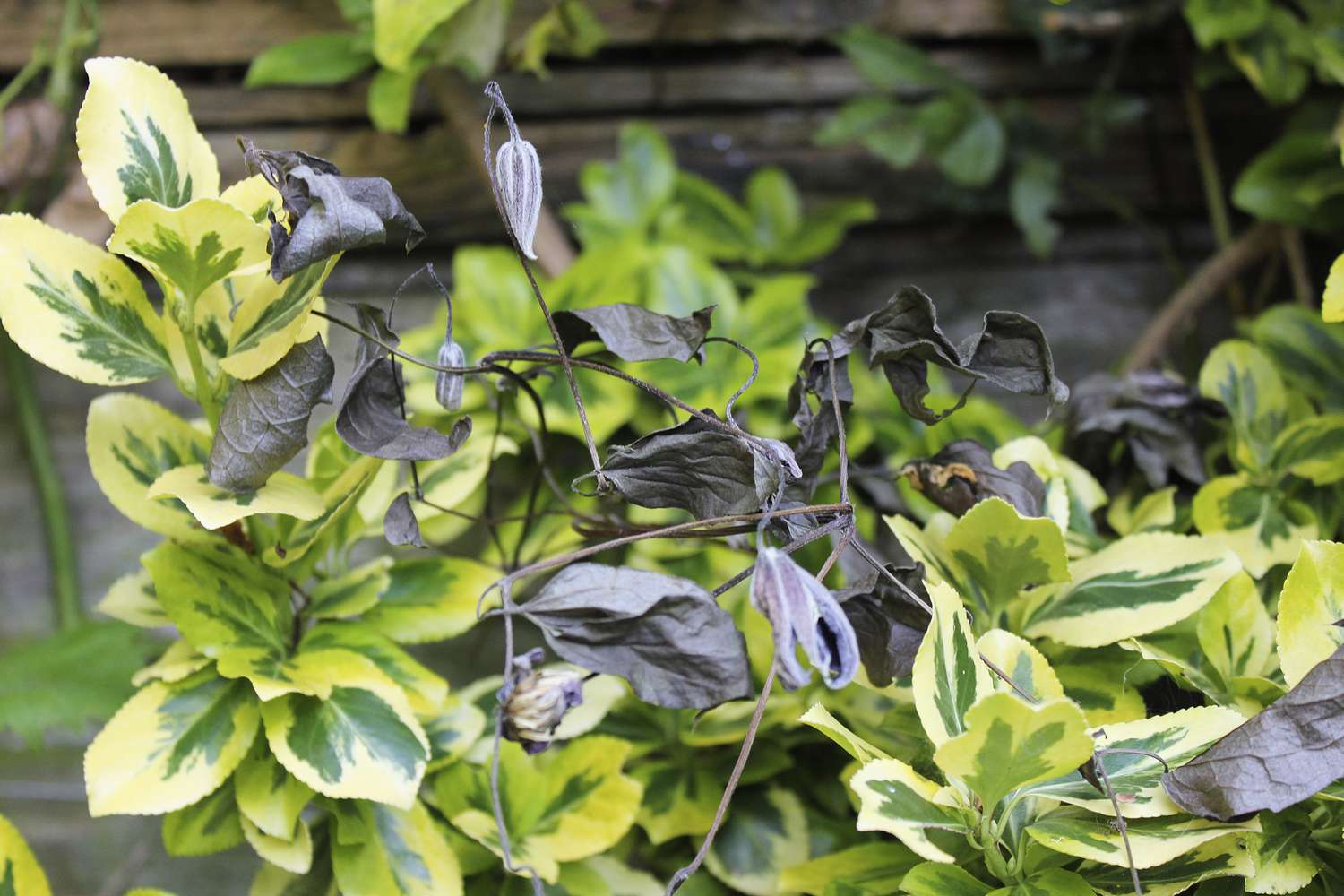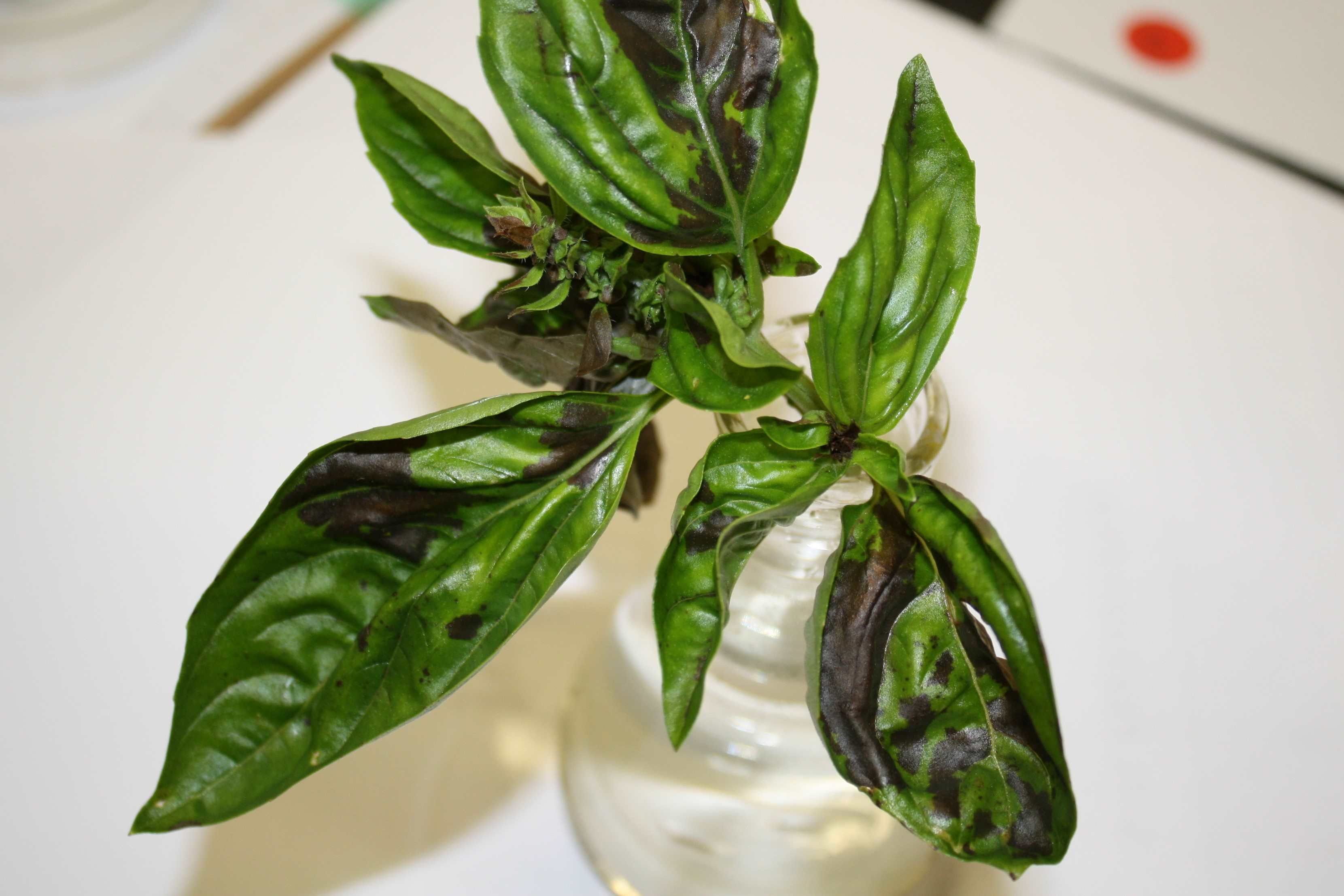Home>Home and Garden>The Shocking Reason Why Your Peace Lily Leaves Are Turning Yellow And Dying


Home and Garden
The Shocking Reason Why Your Peace Lily Leaves Are Turning Yellow And Dying
Modified: March 3, 2024
Discover the common causes of yellowing and dying leaves in your peace lily. Learn how to revive your plant with expert home and garden tips.
(Many of the links in this article redirect to a specific reviewed product. Your purchase of these products through affiliate links helps to generate commission for Noodls.com, at no extra cost. Learn more)
Table of Contents
Introduction
Your peace lily, with its elegant, glossy leaves and delicate white blossoms, has been a source of tranquility and beauty in your home. However, recently, you may have noticed a disheartening change in its appearance. The once lush green leaves are now turning a sickly shade of yellow, and despite your best efforts, the plant seems to be slowly withering away.
This unexpected turn of events can be quite distressing, especially if you've been diligently caring for your peace lily. The good news is that you're not alone in facing this issue. Many plant enthusiasts have encountered similar challenges with their peace lilies, and there are effective solutions to restore your plant to its former glory.
In this article, we'll delve into the potential reasons behind your peace lily's decline, shedding light on the common causes of yellowing and dying leaves. Moreover, we'll explore a surprising factor that may be contributing to the deterioration of your beloved plant. By understanding the underlying issues and implementing the right strategies, you can breathe new life into your peace lily and create an environment where it can thrive once again.
So, if you're feeling perplexed and disheartened by the sight of your struggling peace lily, fret not. Together, we'll unravel the mystery behind its decline and equip you with the knowledge and tools to rejuvenate this cherished botanical companion. Let's embark on this journey to revive your peace lily and witness its resurgence as a vibrant and flourishing presence in your home.
Understanding the Peace Lily
The peace lily, scientifically known as Spathiphyllum, is a popular and versatile houseplant cherished for its striking appearance and air-purifying qualities. Native to the tropical regions of the Americas and Southeast Asia, this resilient plant has found its way into homes and offices worldwide, captivating enthusiasts with its lush, deep green foliage and elegant white blooms.
One of the most distinctive features of the peace lily is its graceful, spoon-shaped leaves that gracefully arch upwards, creating a visually appealing display. The plant's foliage not only adds a touch of natural beauty to indoor spaces but also serves as a powerful air purifier, effectively removing harmful toxins such as formaldehyde, benzene, and carbon monoxide from the surrounding environment.
In addition to its aesthetic and air-purifying attributes, the peace lily is renowned for its adaptability to various light conditions, making it an ideal choice for both seasoned gardeners and novices. This plant thrives in low to medium light settings, making it well-suited for spaces with limited natural sunlight. Furthermore, its moderate watering needs and resilience to neglect make it a low-maintenance yet rewarding addition to any indoor garden.
The peace lily's ability to communicate its needs through visible cues, such as drooping leaves to indicate thirst, makes it an excellent choice for those seeking a plant that readily expresses its requirements. This characteristic not only fosters a deeper connection between caretaker and plant but also allows for timely intervention to address any issues that may arise.
Moreover, the peace lily's symbolism adds an emotional dimension to its appeal, as it is often associated with traits such as peace, tranquility, and harmony. Its serene white flowers, resembling miniature lilies, further reinforce its reputation as a symbol of purity and renewal, making it a thoughtful gift for various occasions.
In summary, the peace lily's allure extends beyond its aesthetic appeal, encompassing its air-purifying capabilities, adaptability, and symbolic significance. Understanding the inherent qualities and preferences of this resilient plant forms the foundation for providing it with the care and environment it needs to thrive. By gaining insight into the peace lily's unique characteristics, you can cultivate a deeper appreciation for this beloved botanical companion and embark on a journey to ensure its well-being and longevity in your home.
Common Causes of Yellowing and Dying Leaves
The sight of yellowing and dying leaves on your peace lily can be alarming, prompting a sense of urgency to identify and address the underlying issues. Several common factors can contribute to this distressing phenomenon, signaling a need for attentive observation and targeted intervention to restore the plant's health. Understanding these potential causes is crucial in formulating an effective strategy to revive your peace lily. Here are some prevalent reasons for yellowing and dying leaves:
-
Overwatering or Underwatering: Peace lilies are sensitive to water levels, and improper watering practices can lead to leaf discoloration and decline. Overwatering can result in root rot, causing the leaves to turn yellow and wilt. Conversely, underwatering can lead to dehydration and subsequent yellowing of the foliage. Finding the right balance and adjusting the watering frequency based on the plant's needs is essential for maintaining optimal soil moisture.
-
Inadequate Light: Insufficient or excessive light exposure can impact the health of your peace lily. If the plant receives too much direct sunlight, the leaves may develop yellow or brown patches, signaling sunburn. On the other hand, prolonged exposure to low light conditions can hinder photosynthesis, leading to yellowing and weakening of the leaves. Assessing the plant's light requirements and adjusting its placement accordingly can help mitigate this issue.
-
Nutrient Deficiency: A lack of essential nutrients, particularly nitrogen, can manifest as yellowing leaves, indicating an imbalance in the plant's nutrient uptake. Regular fertilization with a balanced, water-soluble fertilizer formulated for houseplants can help replenish the necessary nutrients and support the peace lily's overall vitality.
-
Root Bound: Over time, peace lilies can become root bound if not repotted appropriately. This occurs when the roots outgrow the container, leading to overcrowding and reduced nutrient absorption. In such instances, the plant may exhibit symptoms of stress, including yellowing leaves. Repotting the peace lily into a slightly larger container with fresh, well-draining soil can alleviate this issue and promote healthy growth.
-
Environmental Stress: Factors such as extreme temperatures, drafts, or sudden environmental changes can induce stress in peace lilies, causing their leaves to turn yellow and deteriorate. Creating a stable and favorable environment, free from drastic temperature fluctuations and drafts, can help alleviate this form of stress and support the plant's recovery.
By recognizing these common causes of yellowing and dying leaves in peace lilies, you can take proactive measures to address the underlying issues and implement targeted solutions. This understanding empowers you to provide the necessary care and support, fostering the revitalization of your peace lily and nurturing its continued growth and beauty.
The Shocking Reason Behind Your Peace Lily's Decline
Amid the array of potential causes for a peace lily's decline, there exists a surprising and often overlooked factor that can profoundly impact its well-being: the accumulation of mineral deposits in the soil. This seemingly innocuous issue can have detrimental effects on the plant's health, leading to a cascade of symptoms that manifest as yellowing and dying leaves.
Mineral deposits, commonly derived from tap water or the use of fertilizers, gradually build up in the soil over time. These deposits, comprising minerals such as calcium, magnesium, and sodium, can disrupt the delicate balance of nutrients and impede the peace lily's ability to absorb essential elements. As a result, the plant may exhibit signs of distress, including yellowing leaves, stunted growth, and overall decline in vitality.
The impact of mineral accumulation extends beyond nutrient absorption, affecting the soil's pH levels and creating an inhospitable environment for the peace lily's root system. Altered pH levels can hinder the plant's ability to access vital nutrients, leading to deficiencies and subsequent leaf discoloration. Furthermore, the presence of excess minerals can disrupt the delicate equilibrium within the soil, further exacerbating the plant's struggle to thrive.
The insidious nature of this issue lies in its gradual onset, often eluding immediate detection. As the mineral deposits accumulate over time, the peace lily's health gradually deteriorates, culminating in the visible manifestation of yellowing and dying leaves. This phenomenon underscores the importance of proactive soil management and attentive care to mitigate the adverse effects of mineral accumulation.
Addressing this shocking reason behind your peace lily's decline necessitates a multi-faceted approach. Implementing practices such as regular soil flushing, using distilled water or rainwater for watering, and periodically repotting the plant with fresh, well-draining soil can help alleviate the burden of mineral deposits and create a more hospitable growing environment for the peace lily.
By acknowledging the impact of mineral accumulation as a significant contributor to your peace lily's decline, you can take decisive steps to rectify the issue and bolster the plant's prospects for recovery. This newfound awareness empowers you to cultivate an environment that fosters the well-being of your peace lily, ensuring its continued vibrancy and beauty within your home.
Steps to Revive Your Peace Lily
Reviving a struggling peace lily requires a thoughtful and systematic approach aimed at addressing the underlying issues while providing the plant with the care it needs to rebound. By following these essential steps, you can create an environment conducive to the peace lily's recovery and witness the gradual resurgence of its vitality and beauty.
-
Assess the Root Health: Carefully examine the roots of your peace lily to determine if they are healthy and free from signs of rot or overcrowding. Gently remove the plant from its container and inspect the roots, trimming any mushy or discolored sections. If the roots appear overcrowded, consider repotting the peace lily into a slightly larger container with fresh, well-draining soil.
-
Address Watering Practices: Evaluate your watering routine and adjust it based on the plant's needs. Ensure that the soil is moist but not waterlogged, allowing excess water to drain freely from the pot. If overwatering has been a concern, allow the soil to dry out slightly between waterings to prevent root rot. Conversely, if underwatering has been an issue, adjust your watering frequency to maintain consistent soil moisture.
-
Soil Flushing: To mitigate the impact of mineral accumulation, periodically flush the soil with distilled water or rainwater. This process helps leach out excess minerals and restore a more balanced growing medium for the peace lily. Gently water the plant with the purified water, allowing it to drain through the soil and carry away accumulated minerals.
-
Optimize Light Conditions: Ensure that your peace lily is positioned in an area with adequate but indirect light. Shield it from prolonged exposure to direct sunlight, which can lead to leaf damage, and avoid placing it in dimly lit corners that hinder its photosynthetic capabilities. Adjust the plant's location as needed to provide it with optimal light conditions.
-
Nutrient Replenishment: Consider fertilizing your peace lily with a balanced, water-soluble fertilizer formulated for houseplants. This can help replenish essential nutrients and support the plant's recovery. Follow the manufacturer's instructions for dilution and application, being mindful not to over-fertilize, which can harm the plant.
-
Stabilize the Environment: Minimize environmental stressors such as drafts, extreme temperatures, or sudden fluctuations in humidity. Create a stable and favorable environment for your peace lily, allowing it to thrive without being subjected to undue stress that can compromise its health.
By diligently implementing these steps and providing attentive care, you can significantly improve the prospects of reviving your peace lily. This proactive approach addresses the plant's specific needs and sets the stage for its resurgence, ultimately restoring it to a state of vibrant health and rejuvenated beauty.
Conclusion
In conclusion, the journey to revive a struggling peace lily is a testament to the resilience and adaptability of this beloved houseplant. The challenges posed by yellowing and dying leaves serve as poignant indicators of the plant's distress, prompting caretakers to embark on a quest to unravel the underlying issues and restore its vitality. Through a deeper understanding of the peace lily's unique characteristics and the potential factors contributing to its decline, individuals can cultivate a nurturing environment that supports the plant's recovery and eventual flourishing.
The common causes of yellowing and dying leaves, ranging from improper watering practices to environmental stressors, underscore the need for attentive observation and proactive intervention. By recognizing these factors and implementing targeted solutions, caretakers can address the specific needs of their peace lilies, laying the groundwork for a revitalized and resilient botanical companion.
Moreover, the revelation of mineral accumulation as a surprising and impactful contributor to the peace lily's decline sheds light on the intricate dynamics at play within the plant's growing medium. This insight empowers individuals to adopt practices such as soil flushing, mindful watering, and strategic soil management to mitigate the adverse effects of mineral deposits and create an optimal environment for the plant's recovery.
The essential steps outlined for reviving a peace lily, encompassing root health assessment, watering adjustments, soil flushing, light optimization, nutrient replenishment, and environmental stabilization, form a comprehensive framework for guiding the plant towards rejuvenation. By conscientiously following these steps and providing the necessary care, individuals can witness the gradual transformation of their peace lilies from a state of distress to one of renewed vibrancy and beauty.
Ultimately, the journey to revive a peace lily transcends the realm of horticulture, encapsulating a narrative of resilience, empathy, and the profound connection between caretaker and plant. As individuals dedicate themselves to understanding and addressing the needs of their peace lilies, they embark on a shared journey of growth and renewal, fostering an enduring bond that transcends the confines of the botanical world.
In embracing this journey, individuals not only revive their peace lilies but also cultivate a deeper appreciation for the delicate balance of nature and the transformative power of attentive care. Through this process, they become stewards of resilience, nurturing the flourishing of their botanical companions and enriching their homes with the enduring beauty and vitality of the peace lily.














